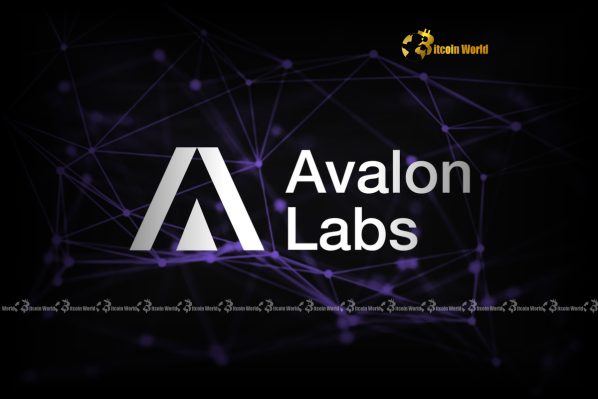BitcoinWorld

Polygon Recovery: Resilient Network Triumphs After Brief Halt
The world of blockchain technology is dynamic, often facing unforeseen challenges that test its very foundation. Recently, the Polygon network experienced a brief but significant disruption that paused block production, causing a temporary stir across its ecosystem. However, in a testament to its robust architecture and dedicated team, the Polygon Foundation swiftly announced a full Polygon recovery, restoring all services and reinforcing confidence in its infrastructure. This rapid resolution highlights the critical importance of resilience in decentralized systems and offers valuable insights into how leading blockchains manage unexpected events, ensuring continued operation and trust.
What Exactly Happened During the Polygon Network Outage?
On [Insert Date if available, otherwise omit], the Polygon network faced a temporary halt in its block production, sending ripples of concern through its extensive user base and the broader crypto community. The disruption, which lasted for approximately an hour, specifically affected the network’s Remote Procedure Call (RPC) services. For those unfamiliar, RPC services are the crucial gateways that allow users and applications to interact with the blockchain, facilitating essential functions like sending transactions, querying data, and enabling decentralized applications (dApps) to operate seamlessly. When these services are interrupted, the entire user experience can come to a standstill, impacting everything from token transfers to DeFi interactions.
The Polygon Foundation quickly identified the root cause of the issue: a validator exit that unexpectedly interfered with the network’s Heimdall layer. To fully grasp the technicality, let’s break down these critical components:
- Validators: These are the backbone of a proof-of-stake blockchain like Polygon. They are responsible for proposing and validating new blocks of transactions, ensuring the network’s security and integrity. Their continuous operation is vital for the chain’s progression.
- Heimdall Layer: Polygon’s architecture is bifurcated into two main layers: the Heimdall layer and the Bor layer. The Heimdall layer is responsible for staking, validator management, and checkpointing the state of the Bor layer (Polygon’s EVM-compatible sidechain) to the Ethereum mainnet. It acts as the orchestration layer for the network’s consensus.
- Validator Exit Impact: When a validator exits the network, especially under specific conditions, it can trigger unforeseen issues within the consensus mechanism. In this particular incident, it affected the Heimdall layer’s ability to process and finalize blocks. This led to a temporary pause in the creation of new blocks, effectively freezing network activity for a short period.
The swift and transparent communication from the Polygon Foundation on X (formerly Twitter) was crucial in managing community expectations and providing timely updates during the incident. This commitment to transparency is a cornerstone of building and maintaining trust in the often-complex and rapidly evolving decentralized ecosystem.
The Swift Resolution: How Polygon Achieved Full Recovery
The Polygon team demonstrated remarkable agility and technical prowess in addressing the outage. Within roughly an hour of the disruption, they announced that all user-facing functions were operating normally, signifying a complete and successful Polygon recovery. This rapid turnaround wasn’t merely about restarting services; it involved a precise diagnosis and the immediate implementation of a permanent fix to the underlying vulnerability.
The foundation confirmed that they applied a “permanent fix” to address the core issue that caused the validator exit to disrupt the Heimdall layer. While specific, in-depth technical details of the fix are pending the release of their detailed post-mortem report, it likely involved strategic adjustments to the validator management protocols, significant improvements to the Heimdall layer’s resilience, or sophisticated updates to how validator exits are handled to prevent any form of cascading failures. This proactive and definitive approach ensures that the exact same vulnerability cannot be exploited again, enhancing the network’s future stability.
The restoration of RPC services means that the entire Polygon ecosystem could resume normal operations swiftly:
- Users can once again seamlessly send transactions, interact with smart contracts, and access their valuable digital assets without hindrance.
- Decentralized applications (dApps) built on Polygon are fully operational, allowing users to engage with DeFi protocols, NFT marketplaces, and gaming platforms.
- Developers can resume building and deploying on the network without interruption, ensuring continuous innovation and growth within the ecosystem.
This rapid deployment of a solution underscores the exceptional technical prowess of the Polygon development team and their unwavering commitment to maintaining network uptime and reliability. These factors are paramount for any blockchain aiming for widespread adoption and a leadership position in the global digital economy.
Ensuring Future Stability: Polygon’s Proactive Measures
Beyond immediate fixes, a critical aspect of effective incident management in the blockchain space is the implementation of robust measures to prevent future occurrences. Polygon’s commitment to releasing a detailed post-mortem report is a testament to its dedication to transparency, accountability, and continuous improvement. Such comprehensive reports typically provide:
- A precise and comprehensive timeline of the incident, from detection to full resolution.
- A deep dive into the technical root cause, explaining the specific vulnerability or trigger.
- The exact steps taken to resolve the issue, including code changes or configuration adjustments.
- Crucial lessons learned from the incident and preventative measures implemented to avoid recurrence.
This level of detailed disclosure is invaluable not only for the Polygon community, fostering greater trust and understanding, but also for the broader blockchain industry. It fosters an environment of shared learning and helps other projects build more robust, resilient, and secure systems. The “permanent fix” implies a significant upgrade or modification to the core network architecture, specifically designed to enhance its fault tolerance and resistance to similar disruptions. This unwavering commitment to long-term stability is a key factor in building profound user trust and encouraging developers to confidently choose Polygon for their innovative projects. The ongoing efforts to fortify the network contribute significantly to the overall strength of the Polygon recovery narrative, moving beyond just fixing an issue to proactively preventing future ones, ensuring a more dependable blockchain future.
Why is Polygon’s Quick Recovery a Big Deal?
In the fast-paced, high-stakes world of cryptocurrency, network uptime and unwavering reliability are non-negotiable. A quick Polygon recovery from an outage, even a brief one, sends several strong and positive signals to the market and its vast ecosystem, highlighting the network’s maturity and dependability:
- Reinforced Trust: Every incident, no matter how minor, is a test of a blockchain’s resilience and its team’s capabilities. Polygon’s swift and effective resolution demonstrates its ability to handle unexpected challenges with agility, thereby reinforcing profound trust among its users, dedicated developers, and increasingly, institutional investors who demand stability.
- Operational Efficiency: The minimal downtime means significantly less disruption for decentralized applications (dApps), critical liquidity pools, and ongoing transactions. This operational efficiency is absolutely vital for maintaining a healthy, vibrant, and actively engaged ecosystem, ensuring seamless user experiences.
- Competitive Advantage: In a crowded and highly competitive blockchain landscape, reliability is a key differentiator that sets projects apart. Networks that can quickly recover from issues and maintain consistent uptime stand out, attracting more innovative projects and users who prioritize stability and dependable performance above all else.
- Maturity of the Network: The ability to accurately diagnose and fix complex technical issues quickly indicates a mature, well-managed, and professionally run network. It clearly shows that the team has robust incident response protocols, highly skilled engineers, and a clear action plan in place for unforeseen circumstances.
- Impact on DeFi and NFTs: Polygon hosts a vast and thriving ecosystem of decentralized finance (DeFi) protocols and bustling NFT marketplaces. Prolonged downtime could lead to significant financial losses for users, substantial liquidity issues, and widespread user frustration. The quick recovery mitigated these potential negative impacts, protecting user assets and preserving crucial market confidence.
This incident, though initially challenging, ultimately serves as a powerful testament to Polygon’s engineering strength, its operational robustness, and its unwavering dedication to providing a dependable and high-performing platform for decentralized applications globally.
Navigating Network Challenges: Lessons for the Crypto Ecosystem
The Polygon incident, while successfully resolved, offers invaluable lessons for the entire blockchain ecosystem. It underscores the inherent complexities, intricate interdependencies, and potential vulnerabilities present even in the most sophisticated decentralized networks. Here are some key takeaways that can benefit all blockchain projects:
- Importance of Redundancy and Decentralization: While Polygon is designed to be decentralized, incidents like this highlight the continuous need for robust redundancy measures and a truly distributed validator set to minimize single points of failure. The more distributed the network, the more resilient it becomes.
- Proactive Monitoring: Advanced, real-time monitoring systems that can detect anomalies and potential issues before they escalate into full-blown outages are crucial. This allows development teams to respond swiftly and prevent minor glitches from becoming major, reputation-damaging disruptions.
- Clear and Consistent Communication: Timely, transparent, and consistent communication during an incident is paramount. Projects that keep their communities informed with accurate updates build stronger relationships and manage panic and speculation effectively. Polygon’s updates on X served as a good example of effective crisis communication.
- Thorough Post-Mortem Analysis: Every incident, regardless of its severity, is an invaluable opportunity for learning and improvement. Detailed post-mortem reports are essential for identifying precise root causes, implementing permanent fixes, and continuously improving future network resilience and incident response strategies.
- Community Resilience and Education: The crypto community’s understanding, patience, and support during such events are also vital. Educating users about the inherent complexities and occasional challenges of blockchain technology can help manage expectations and foster a more resilient and informed user base during unexpected disruptions.
As the blockchain industry continues to mature and evolve, incidents like Polygon’s brief halt and subsequent Polygon recovery will become less about alarm and more about demonstrating the continuous improvement, hardening, and professionalization of these critical digital infrastructures. It’s a journey of constant innovation, adaptation, and unwavering commitment to stability.
The recent block production halt on the Polygon network, though a brief challenge, has ultimately reinforced the network’s reputation for exceptional resilience and rapid responsiveness. The swift diagnosis, the decisive application of a permanent fix, and the promise of a detailed post-mortem report underscore Polygon’s unwavering commitment to maintaining a robust, reliable, and secure platform for its global community. This successful Polygon recovery serves as a powerful reminder that while unforeseen issues can arise in any complex technological system, a dedicated and skilled team, transparent communication, and an unyielding focus on long-term stability are paramount. As Polygon continues to innovate and expand its reach, its proven ability to navigate and overcome such hurdles will undoubtedly contribute to its sustained growth and broader adoption in the ever-expanding world of decentralized finance and Web3.
Frequently Asked Questions (FAQs)
- Q1: What caused the recent block production halt on the Polygon network?
- A1: The disruption was caused by a specific validator exit that interfered with the network’s Heimdall layer, temporarily pausing block production and affecting critical RPC services.
- Q2: How long did the Polygon network outage last?
- A2: The block production halt lasted for approximately an hour before services were fully restored and a permanent fix was successfully applied by the Polygon team.
- Q3: What are RPC services, and why are they important for Polygon?
- A3: RPC (Remote Procedure Call) services are crucial gateways that allow users and applications to interact with the blockchain, enabling essential functions like transactions, data queries, and the seamless functionality of decentralized applications (dApps).
- Q4: What steps did Polygon take to ensure a full recovery and prevent future incidents?
- A4: Polygon’s team quickly diagnosed the root cause and applied a permanent fix to the underlying issue. They have also committed to releasing a detailed post-mortem report to share insights, lessons learned, and preventative measures implemented.
- Q5: Does this incident affect the security of my assets on Polygon?
- A5: No, the incident was a temporary service disruption primarily affecting block production and RPC access, and it did not compromise the security of user assets. The network’s core integrity remained intact, and a full Polygon recovery was achieved, ensuring asset safety.
- Q6: How does Polygon’s quick response impact its reputation in the crypto space?
- A6: Polygon’s swift and transparent response significantly enhances its reputation, demonstrating its reliability, technical competence, and commitment to maintaining network stability, which are crucial for attracting and retaining users and developers.
Did you find this deep dive into Polygon’s swift recovery insightful? Share this article with your network on social media to spread awareness about blockchain resilience and the importance of robust incident response in the crypto space! Your shares help inform and educate the broader community.
To learn more about the latest blockchain technology trends, explore our article on key developments shaping Polygon’s network evolution and its future prospects.
This post Polygon Recovery: Resilient Network Triumphs After Brief Halt first appeared on BitcoinWorld and is written by Editorial Team





